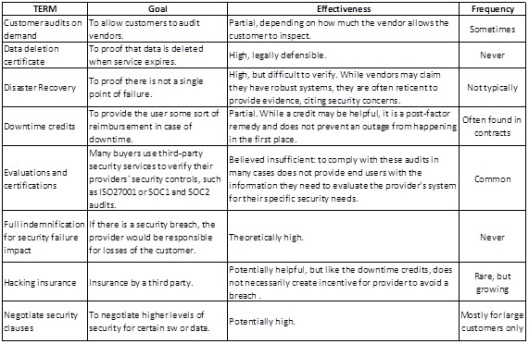In my speech I outlined our motivation
and the different projects we are carrying out (or just finished) ant that they
are driven by and converged in the construction of
thanks to the combination of multiples techniques, methods,
processes and technologies:
- Auto-generation.
- Tri-generation energy production by gas engines in the first phase (and by
fuel cell in the second phase).
- Free-cooling.
- Heat confinement.
- Residual and unused energy reuse
- Overhead Distribution of power, data and climate.
- Integration between ITC management systems and energy infrastructure DCIM).
- Designed for Cloud Computing Services
And where new efficiency metrics are been
measured
- Of course, PUE (Power Usage Effectiveness)
- WUE (Water Usage Effectiveness)
- CUE (Carbon Usage Effectiveness)
- GEC (Green Energy Coefficient)
- ERF (Energy Reuse Factor)
- Other from the points of view of Life Cycle Sustainability Assessment for
Greenhouse Gas (GHG) Emission
Coming back to our R&D related projects that
let to the Walhalla improvements, they range:
- From bare innovation processes projects either:
- Improving energetic efficiency processes: ISO
50.001, EU Code of Conduct for Data Centers , ISO 14.001, and a pilot project
with AENOR (Marca CEE CPD), etc.
- Or improving operational efficiency: ISO 20.000,
ISO 27.0001, ITIL best practices, etc.)
To research and development projects:
- Directly addressing energetic efficiency of our
DC:”Green DC” and “CDPVerde”,
- Or addressing its operating efficiency:
“Predicitve I2TM”, “DCIM”, etc.
- Or the ones that look for both to improve
energetic efficiency and to offer new advanced services:
“RealCloud”,“CloudSpaces”, “StackSync”.
A complete relation of our R&D project could be found in http://www.tissat.es/en/rdi/projects:
Since copying is easy and comfortable, the
remaining of this post (the one related with other speech in the event) is
extracted
from the new published in “Computer World”, but I’m sorry
since because it is in Spanish:
El Encuentro reunió tanto a proveedores de
referencia, organismo públicos, universidad y centros de innovación como a
usuarios corporativos con el objetivo de ser punto de encuentro y detectar
posibles intereses comunes para desarrollar proyectos en colaboración. Como
asistentes participaron expertos de compañías innovadoras como Grupo Santander,
Correos, Endesa, Telefónica, BBVA, Renfe, Ferrovial y Ono, entre otras
muchas.
El evento lo inauguró con su intervención,
D. Javier García Serrano, jefe del Departamento de Energía,
Química, Medio Ambiente, Producción y Servicios del
CDTI (Centro para el Desarrollo Tecnológico
Industrial), se refirió al compromiso de su entidad con “los proyectos de
I+D, individuales o en consorcio, como instrumento fundamental para fomentar la
competitividad de las empresas, así como a las nuevas empresas de base
tecnológica a través del programa NEOTEC y de la iniciativa público-privada
INVIERTE ECONOMÍA SOSTENIBLE, puesta en marcha recientemente”. Sobre la
eficiencia energética en concreto, destacó la relevancia del futuro programa
Horizonte 2020 de la UE, que “contempla un presupuesto provisional de alrededor
de 14.000 millones de euros para los retos sociales de energía segura, limpia y
eficiente, y transporte inteligente, limpio e integrado”. Finalizó su
intervención recordando que aún permanecen abiertas varias convocatorias
relacionadas con la eficiencia energética, con un presupuesto de 26 millones de
euros para la aplicación de las TIC a la movilidad cooperativa y 18 millones
para Smart Grids. Asimismo, destacó la alta participación española en la
convocatoria SMARTCITIES, cerrada recientemente.
A continuación, D. Borja Izquierdo, representante
del CDTI en el Comité de Programa de Energía del Departamento del Programa
Marco, se refirió al European Innovation Partnership (EIP) sobre Smart Cities
& Communities, que contribuirá al despliegue de soluciones innovadoras
conjuntas en las áreas de TIC, transporte y energía para aumentar la eficiencia
energética.
La sesión plenaria finalizó con las
intervenciones de D. Gabriel Cuervo, Innovation Project Manager en
Ferrovial, y de
D. Carlos Cebrián, Director de I+D+i en
Tissat (un servidor). Ambos detallaron el
compromiso de sus compañías con la eficiencia energética y la sostenibilidad en
sus distintos ámbitos de actuación, así como su modelo de innovación abierta a
la colaboración con organismos públicos, la industria y las universidades.
Tras al sesión plenaria se sucedieron unas Mesas
de trabajo, que tenían por objetivo fomentar la colaboración entre los
asistentes en los distintos ámbitos de aplicación de las TIC en la eficiencia
energética, como edificios inteligentes, centros de datos, infraestructuras TI,
colaboración, utilities, eGovernment, cloud computing, vehículo eléctrico,
movilidad y ciudades inteligentes. Cada mesa contó con la participación de un
representante del CDTI para ayudar a resolver las dudas surgidas durante los
debates y dar apoyo al moderador de enerTIC.
Durante la jornada, enerTIC presentó
una guía para la mejora de la eficiencia energética, que ofrece las principales
tendencias y soluciones en la aplicación de las TIC para la eficiencia
energética desde la perspectiva de expertos de la Administración española y
europea, consultoras, analistas, representantes de la industria y usuarios
corporativos. Incluye además referencias a los 100 principales proveedores de
este tipo de soluciones TIC: uno de los cuales, por supuesto, es TISSAT.

